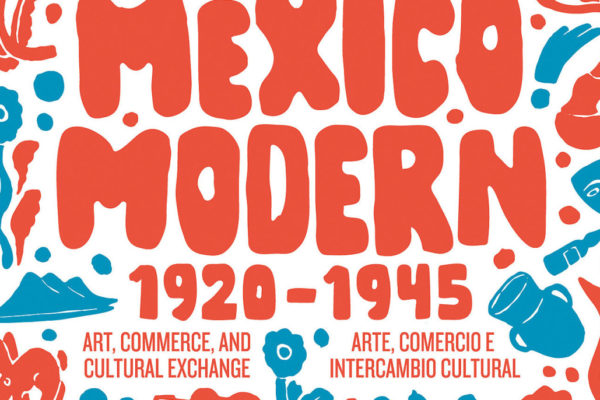AUSTIN, Texas — Chronicling two decades of cultural exchange between Mexico and the United States, the exhibition “Mexico Modern: Art, Commerce, and Cultural Exchange, 1920–1945” showcases examples of modern Mexican art and design. It also documents the ways — through exhibitions, books and articles — this art was broadcast to new audiences, primarily in the United States. The exhibition demonstrates how, in the 1920s and 1930s, Mexican art that was initially received as avant-garde gained mainstream acceptance.

On display from Sept. 11 through Jan. 1 in the Harry Ransom Center at The University of Texas at Austin, the exhibition highlights the important history of 20th-century art and how artists, museum curators, gallery owners, journalists and publishers in both countries instigated a cultural phenomenon by creating and promoting art that pioneered a synthesis of indigenous traditions and international aesthetics.
The more than 200 items in the exhibition, drawn primarily from the Ransom Center’s collections, reveal the importance of the transnational networks of individuals and institutions that sought, championed and interpreted many great, often radically new, works of art. The materials include paintings, photographs, jewelry and decorative arts, as well as correspondence, periodicals and exhibition brochures.
“ ‘Mexico Modern’,” notes guest curator Thomas Mellins, “provides a unique opportunity to showcase the Ransom Center’s remarkable collections to present a memorable cast of characters, whose connectedness is revealed not only through great works of art, but also via intimate media such as letters and snapshots.”
The popularity and prestige of Mexican art throughout the 1920s and 1930s was the direct result of a dynamic exchange between Mexico and the United States, where New York, Chicago and Los Angeles served as epicenters of cultural activism.
This Mexican moment encompassed artists such as painters Diego Rivera, Frida Kahlo, José Clemente Orozco, David Alfaro Siqueiros and Jean Charlot; graphic designer and art historian Miguel Covarrubias; photographers Nickolas Muray, Tina Modotti, Edward Weston and Manuel Álvarez Bravo; and jewelry designer William Spratling. Their work was championed by journalist and writer Anita Brenner, curator René d’Harnoncourt and publishers Frances Toor and Alfred and Blanche Knopf, among others. These individuals, many of whom traveled back and forth between the two nations, collectively became an important part of the historical narrative.
“Some of these individuals were famous in their lifetimes,” said Donald Albrecht, guest curator. “Others will be discoveries for some people visiting the show. One of the great pleasures of organizing ‘Mexico Modern’ has been to give these highly creative, though sometimes overlooked, people their due.”
Accompanying the exhibition is the book “Mexico Modern,” which will be published by the Museum of the City of New York and the Ransom Center in conjunction with Hirmer. The book
features essays from the curators and profiles of leading figures showcased in the exhibition. Also included is an introductory essay by George F. Flaherty, assistant professor of Latin American and U.S. Latino art history at UT Austin, that explores the social, political and economic contexts of the era.
“Mexico Modern: Art, Commerce, and Cultural Exchange, 1920–1945” can be seen starting Sept. 11 in the Ransom Center Galleries on Mondays through Fridays from 10 a.m. to 5 p.m., with extended Thursday hours until 7 p.m. The galleries are open from noon to 5 p.m. on Saturdays and Sundays. Public tours are offered every day at noon, Thursdays at 6 p.m., and Saturdays and Sundays at 2 p.m.
The Museum of the City of New York will host the exhibition in fall 2018.
High-resolution press images are available.




